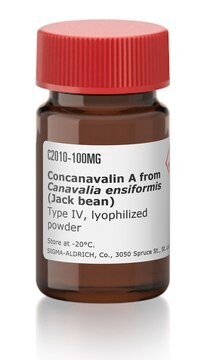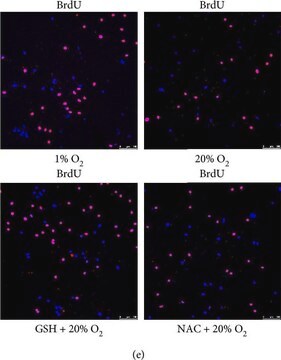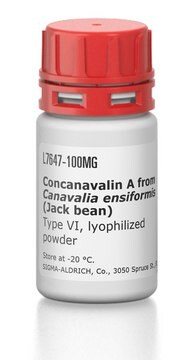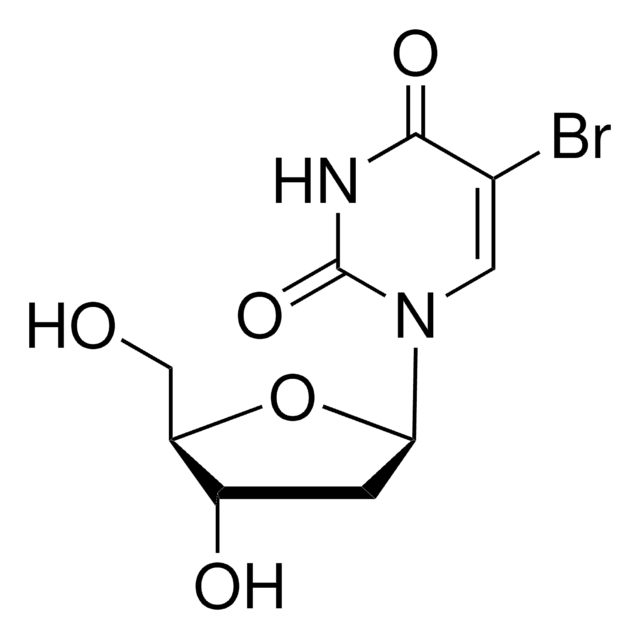C5275
Concanavalin A from Canavalia ensiformis (Jack bean)
Type IV-S, lyophilized powder, aseptically processed, BioReagent, suitable for cell culture
Synonim(y):
Con A
About This Item
Polecane produkty
sterylność
aseptically processed
Poziom jakości
typ
Type IV-S
linia produktu
BioReagent
Formularz
lyophilized powder
metody
cell culture | mammalian: suitable
zanieczyszczenia
salt (Contains buffer salts and NaCl)
rozpuszczalność
PBS: 5 mg/mL, slightly hazy
H2O: soluble, slightly hazy
temp. przechowywania
−20°C
Szukasz podobnych produktów? Odwiedź Przewodnik dotyczący porównywania produktów
Powiązane kategorie
Opis ogólny
Zastosowanie
- in in vitro cell proliferation assay and cell cycle assessment
- in lymphocyte proliferation
- in splenocyte culturing
Działania biochem./fizjol.
Komentarz do analizy
Where reported, agglutination activity is expressed in μg/ml and is determined from serial dilutions in phosphate buffered saline, pH 6.8, containing Ca2+ and Mn2+ of a 1 mg per mL solution. This activity is the lowest concentration to agglutinate a 2% suspension of human erythrocytes after 1 hr incubation at 25 °C.
produkt powiązany
Hasło ostrzegawcze
Danger
Zwroty wskazujące rodzaj zagrożenia
Zwroty wskazujące środki ostrożności
Klasyfikacja zagrożeń
Repr. 2 - Resp. Sens. 1 - Skin Sens. 1
Kod klasy składowania
11 - Combustible Solids
Klasa zagrożenia wodnego (WGK)
WGK 3
Temperatura zapłonu (°F)
Not applicable
Temperatura zapłonu (°C)
Not applicable
Środki ochrony indywidualnej
dust mask type N95 (US), Eyeshields, Faceshields, Gloves
Wybierz jedną z najnowszych wersji:
Masz już ten produkt?
Dokumenty związane z niedawno zakupionymi produktami zostały zamieszczone w Bibliotece dokumentów.
Klienci oglądali również te produkty
Nasz zespół naukowców ma doświadczenie we wszystkich obszarach badań, w tym w naukach przyrodniczych, materiałoznawstwie, syntezie chemicznej, chromatografii, analityce i wielu innych dziedzinach.
Skontaktuj się z zespołem ds. pomocy technicznej











